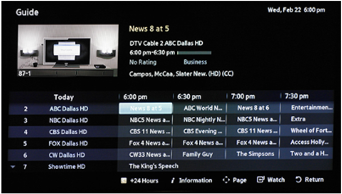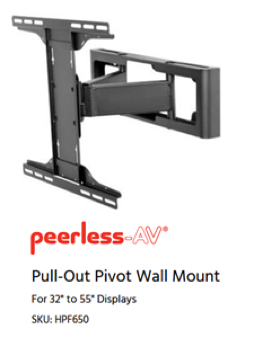by Guest Blogger | Oct 23, 2017 | Retail

Evidence of the disruptive power of pop-up retail is rapidly emerging. Take for instance, the recent announcement by WPP agencies Barrows and VML, who have teamed up with Samsung, to develop what is being described as the next generation of Connected Pop-Up stores.
The Connected Pop-Up initiative aims to simultaneously re-invigorate retail while leveraging a shopping trend consumers have shown themselves ready to embrace. The concept give brands and retailers a way to quickly and affordably activate short-term, temporary retail through a turn-key solution that incorporates digital to deliver personalized brand experiences informed by retail IoT sensing technologies and analytics.
“This is all about the intersection of physical and digital retail,” said Jon Bird, executive director, Global Retail and Shopper Marketing at VML. “That’s where retail is going, and our ability to bring our digital expertise to clients in the retail space excites us. This is a re-invention of how technology can work in a temporary space and our role has been to contribute thinking on the Connected Pop-Up consumer experience.”
Addressing Retail Disruption Head-on
Pop-up retail already is proving a disruptive force, with short-term, spontaneous retail events driving a $50 billion industry in the U.S., according to industry database PopUp Republic.
It comes at a tumultuous time in retail, with long-established brands recently closing hundreds of brick-and-mortar outlets.
At a time when consumers are scurrying from traditional retail while embracing alternative shopping experiences, Connected Pop-Up brings a technological solution to address the disruption. It offers a remedy through connectivity, with ideation, location scouting, logistics, staffing, point-of-sale (POS) fulfillment, real-time customer engagement and content creation all interwoven and interconnected.
An Internet of Things (IoT) dashboard pulls it all together, providing store data, retail analytics and insight into store activity, including visitor demographics and even sentiment, through advanced audience measurement technologies.
While a number of factors are driving the consumer exodus from retail, it’s clear that certain changes could be made in a pop-up context that would address shoppers’ most prevalent concerns. Ultimately, Connected Pop-Ups could help to bring:
- Intelligence by generating new IoT retail analytics and insights, targeted smart signage, POS transactions, and virtual and augmented reality.
- Affordability through disrupting the status quo with a tiered rental model and multiple levels that differ on size of footprint, technology inclusions and extent of the activation.
- On-demand capacity with a modular construction that can be assembled in a variety of ways to suit an individual brand’s requirements.
In the midst of the present retail upheaval underway, a new, tech-driven approach to the sector addresses the increasing intersection of physical and digital retail. Even as brick-and-mortar stores struggle, the sector is moving steadily in the direction of more digitally driven solutions to address the enigma of customer interaction.
The Connected Pop-Up initiative addresses this trend head on, with a tech-driven alternative that is at once smarter and more cost-effective.
Technology is helping retailers change how consumers interact with businesses on a daily basis. Get a deeper look at innovations influencing this change.
by Apryl Lamberti | Sep 18, 2017 | Hospitality, Pro Displays
TECHNOLOGY DRIVEN.
Hoteliers are constantly challenged to keep up with the rapid pace of technology advancements and with the majority of U.S. hotels still running on coax infrastructures, most properties are still playing catch-up with the replacements of first generation flat panels to LED technology with limited or no IP-connectivity for over-the-top content for access to guest-provided media/sources.
Some might ask, “Why is having the latest technology so important in places where people are so transient? Perception is everything and in a business where moments of interactions or scattered impressions can influence loyalty rates or return bookings (a key factor that hotel management is incentivized on by the way) the lasting imprint technology makes on hotel guests is more important than you might think.
What hoteliers are really in competition with is the technology that consumers are using day-in and day-out. Since consumer electronics influence commercial solutions (both in professional A/V and hospitality), it is understandable that hoteliers may always be a few steps behind the latest and greatest consumer gizmo or gadget (and that’s ok) but the reality is that travelers simply expect technology in hotel properties to have a similar look & feel they’ve come to anticipate based on consumer-tech incorporated into their lives. Consider touch screens, automated check-in kiosks or your favorite travel app and this concept comes to life.
Samsung, the leading brand in consumer electronics and professional display solutions has incorporated some of the top features of its award-winning consumer televisions into its commercial line of in-room hospitality solutions making it the most expansive lineup in the market with options ranging from 22-inch to 75-inch options and compatibility with nearly every content provider.
Technologies include: Embedded pro:idiom and non-pro:idiom Digital Rights Management technology (DRM), b-LAN, Smart, UHD (4K resolution) varieties. In addition, Samsung’s 694 Series introduced last year can be deployed to achieve over-the-top (internet accessible (“think smart”)) content via coax vs. IP-protocols typically required; this can be especially useful for historic or luxury properties where new wiring infrastructure is practically out of the question or may be cost prohibitive however the hotelier still wants to deliver a premium in-room entertainment experience for their guests.
Control Content on Hundreds of Digital TVs at Once
Eliminate room-by-room visits to each guest room by using a single-location remote solution. The REACH Server delivers updated firmware and other settings to TVs through RF signals. Updates are simple and simultaneous, so there’s no need to go from room to room to update each display with USB cloning. This way, your staff has more time to focus on other ways of improving the guest experience.
Samsung’s REACH Content Management Solution is another example of behind the scenes product with an interface that instantly modernizes the look and feel of in-room entertainment and the function of how guests engage with their TV, the centralized “hub” of the guestroom. Using REACH, a property can customize the guest experience and welcome guests by name, share useful information like weather or essential news updates and even promote revenue generating amenities such as happy hour in the hotel lounge, weekend SPA services or local tours or nearby attractions creating entertainment opportunities for guests with added revenue-sharing opportunities for hoteliers; plus, including pictures of the hotels’ artwork, logos, images or other content is a cinch- no more generic content! This is just scratching the surface when it comes to REACH- other components include centralized control for channel mapping configurations and labor savings for programming features like volume limiting and other energy savings options.
Add a Residential TV Experience
Bring a residential TV navigation experience to the guest rooms with the Interactive Program Guide (IPG). IPG data is provided through the subscription service by your content provider or system integrator. The REACH device can then pull the necessary metadata from multiple sources in multiple formats. Guests can enjoy picture in picture viewing, detailed program information and a convenient channel grid.
Deliver Information to In-Room Guests Rapidly
Deliver information automatically with a headline-style scrolling ticker. The LYNK REACH ticker feature provides a crawl of data that’s of special interest to guests, such as local weather or event information. In addition, property managers can create and update targeted promotional content or marketing messages, while displaying an interface that seamlessly matches your property’s brand.
Optimize Total Cost of Ownership
This integrated solution uses existing infrastructure assets, lower labor and operating costs and eliminates the need for set-top boxes and other components. For those establishments that have RF infrastructure currently in place, LYNK REACH is an ideal way to provide TV content more efficiently.
TeleAdapt’s Roomcast solution is an innovative technology powered by Google Chromecast that enables guests to stream their own content right from their mobile device (Pandora, Netflix, ESPN, etc.) directly to the guest room TV without having to download an app, enter a password or email address which eliminates any concerns for jeopardizing a guests’ private information or personal area network. RoomCast is better than screen mirroring; it even allows guests to use their applications (like checking emails for example) at the same time as casting content from whatever the source (Netflix, etc.). It’s no wonder live casting has already been named one of the hottest tech trends anticipated to change the hospitality industry over the next 10 years!
by Apryl Lamberti | Sep 6, 2017 | Hospitality, Uncategorized
SIZE MATTERS.
The United States hotel market is made up of 4 million hotel rooms and the typical life span of guest room televisions ranges between 5-7 years according to recent studies.
Going back just a few years, the most popular size for guest room televisions in economy scale properties like Choice brands for example, typically required a 28 or 32-inch TV although some properties are moving towards a 40-inch in efforts to future-proof investments with trends leaning towards bigger panels.
Midscale brands such as Hilton for example, typically consider a 40-inch guest room TV acceptable however will often make a bigger investment for the next size up (43-inch) as larger screen sizes bare higher rack rates (room rates) and can boost incremental revenues; suites with living rooms or separate seating areas from sleeping rooms frequently specify larger sizes such as 48-inch or 50-inch to provide a more impactful experience for in-room entertainment and we even see trends to 55-inch becoming the most popular future-proof size in this segment.
When it comes to some upscale or luxury chain scales, including some Hyatt brands for example, there are requirements that stretch to a 60-inch and even a 65-inch set- some with mandates for smart features such as those offered by Samsung. Who knew those big and bulky armoires would eventually be sawed in half and re-purposed as dressers to make (visual) room for a slim and sleek flat panel television with built-in swivel capabilities- that we now consider essential for that modern, high-tech, designer look?
Similar implementation can be seen in other luxury brands like JW Marriott, Westin, Ritz Carlton and others, with the combination of larger screen sizes and high-designer appeal of a wall-mounted installation like with the HPF-650 specifically made for hospitality by Peerless-AV, the most widely deployed mount hands-down in the industry.
We will keep tabs on the trends and keep you posted of any new ones we see. We’re in a prime time in the industry with so many of the first generation flat panels now due for replacement. Be sure to check property websites as you’re working with them on any other opportunities so you can easily spot feature listings that may show guest room pictures with outdated models prime for upgrades!
by Melody Craigmyle | Feb 26, 2016 | Digital Signage, News
It’s especially nice when the manufacturers plan their distributor summits in a nice warm location during the dead of February. Such was the case this month with Samsung in beautiful San Antonio, Texas. Distributors, resellers and DMR’s gathered to hear the vision to 2016 and beyond, while seeing some of the latest product developments.
One of the greatest things about these functions is the networking aspect. You’re surrounded by customers, the manufacturer’s folks and even your friendly competitors (and if you are lucky a celebrity or two). The opening reception kicked off this portion of the conference. Here I am rubbing elbows with George Gervin from the San Antonio Spurs (left) and Director, US B2B Distribution for Samsung, Tom Perrier (right):
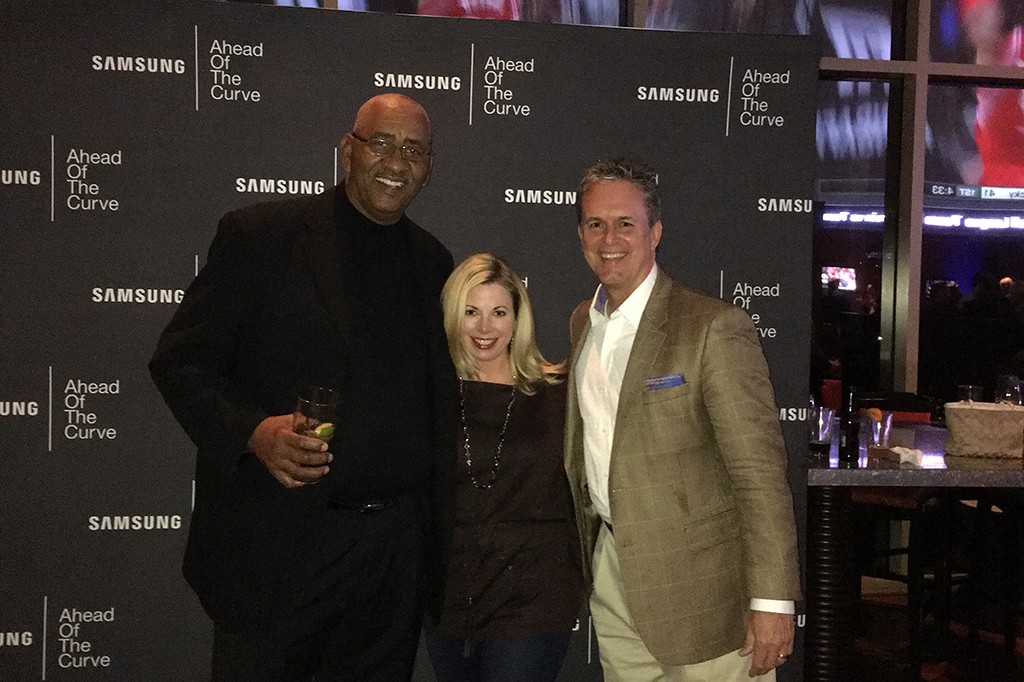
A lot of the conversations revolved around the ever-present dilemma of shrinking and sometimes even razor thin margins on displays in both the Pro and especially consumer markets. I think Samsung has got some new things up their sleeve that may be impactful for their partners as to help with the margin issue. More on that later. Now speaking of razor….
I’ve been on the road a lot lately, and even though I consider myself a season traveler, inevitable I forget something. This time it was a razor so I went down to the JW Marriott gift shop. Filled with cowboy hats, sombreros, ponchos, hot sauces and other Texas sized treats, it was your typical gift shop. I grabbed my usual brand from the stand, went up to the register and the cashier said, “That will be $20.12”. WHAT???!! $20.12 for one disposable razor?
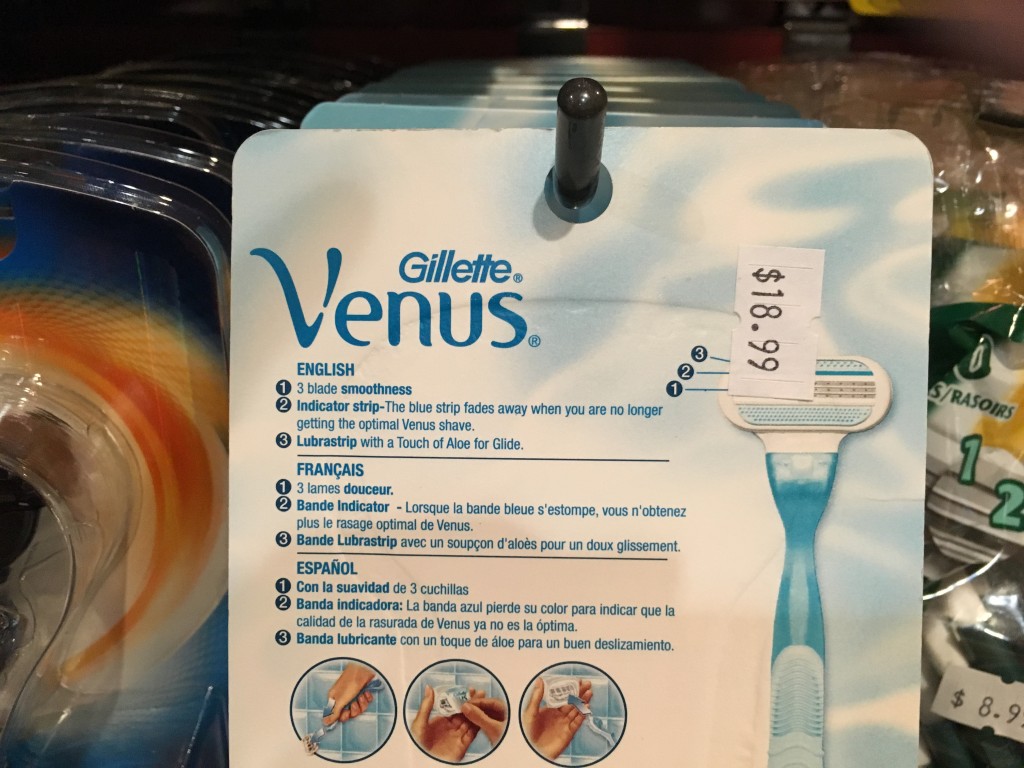
I said no thanks and started to wonder…in this age of fighting declining margins in our industry, how is it that a commodity product like the razor can command 3000% mark up? Location, location, location. Resourcefulness took me to the spa and they ponied up a razor at no charge.
On to the Samsung Product Showcase – in usually Samsung fashion they never disappoint when it comes to new product development. It was good to see some of the concept things coming to fruition such as:

The transparent display which holds a multitude of applications such as retail and anywhere the end user just basically wants to be uber swank.
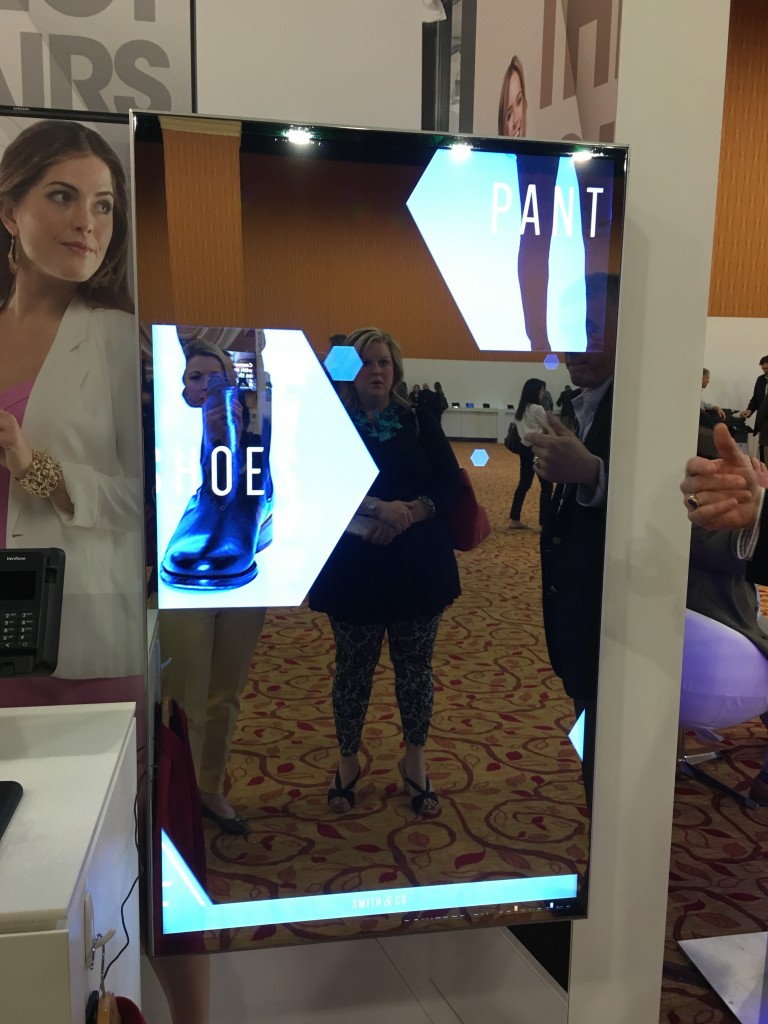
The mirror display which they showed in a retail setting with RF technology in clothing and shoes that dynamically changed when the user took them to the mirror. Here is our Business Development Manager extraordinaire, Apryl Lamberti taking it for a spin.
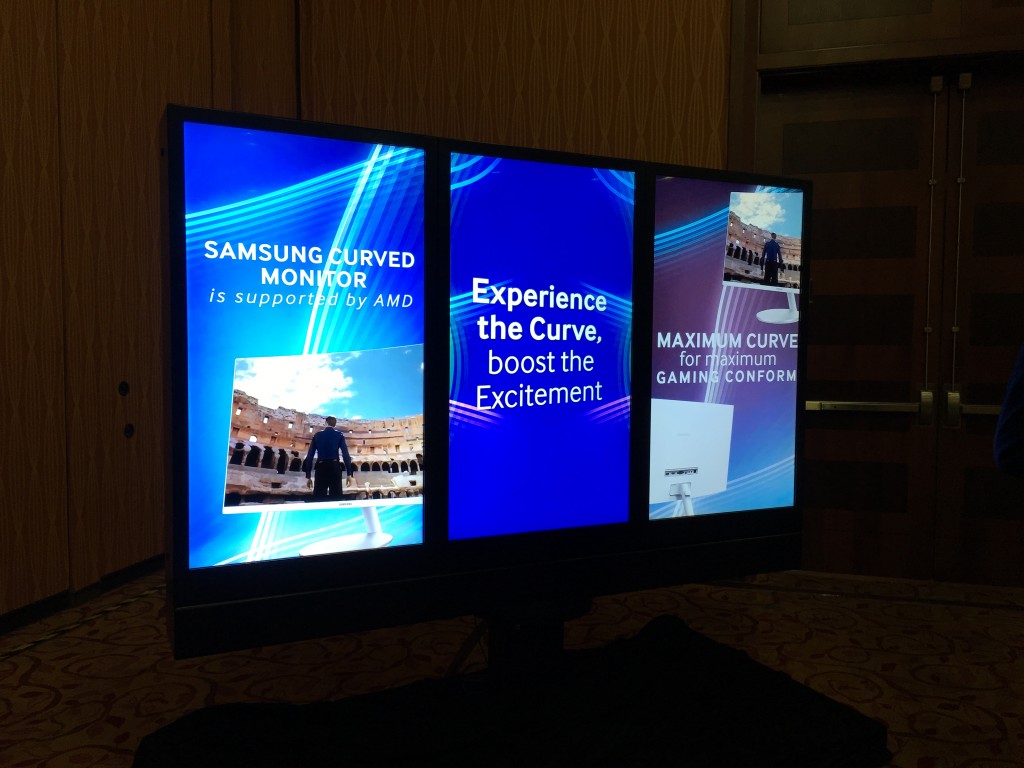
Outdoor displays – not just ruggedized, coated and cased back- lit LED panels but..
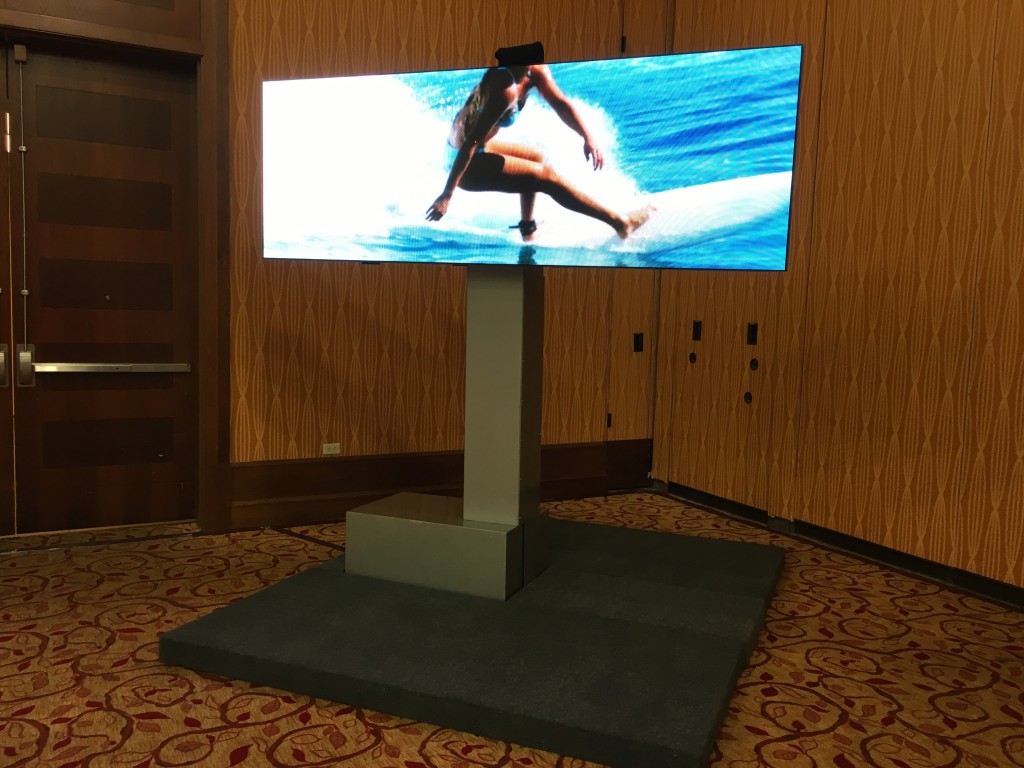
Surfs’up! Samsung’s YESCO acquisition last year brings the new outdoor LED.
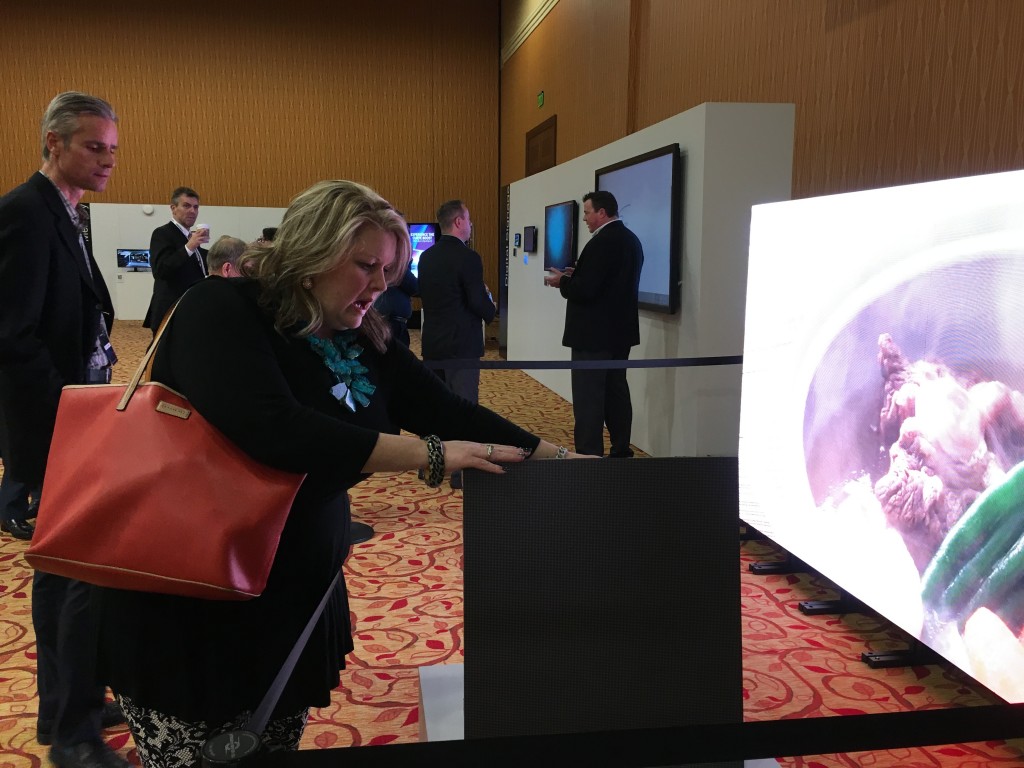
Finally the indoor LED was quite a hit. Here is Apryl examining the type of panel used to make the video wall in the background.
I think the future looks bright with the new LED products (no pun intended). What Samsung was showing are solutions that require an ecosystem of services, which is where the margin lies and value to our partners. The opportunity for services such as content creation, can create that long-term relationship with a customer, long past the sale of the display.





